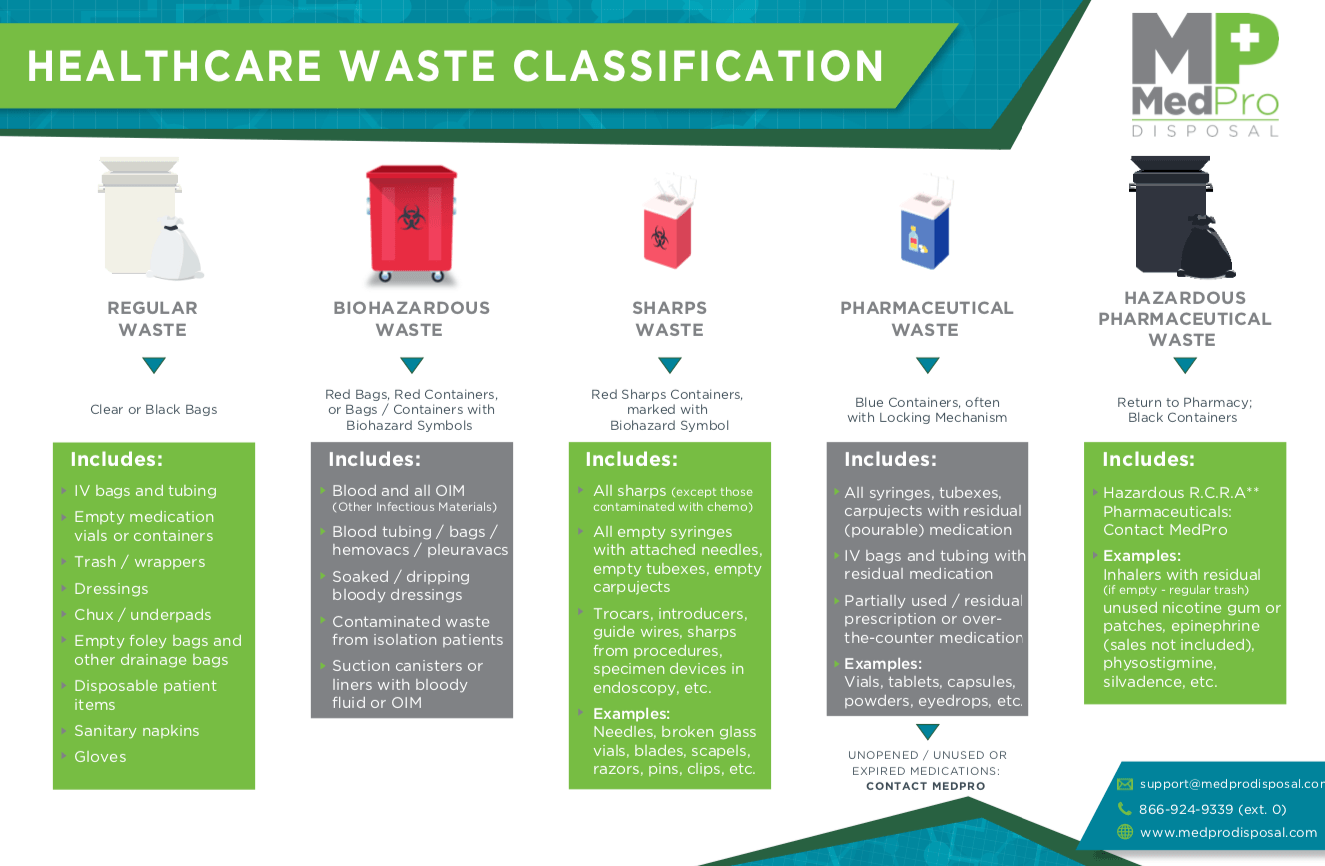Recognizing the Various Kinds Of Waste Disposal Techniques
In the realm of waste administration, the variety of disposal techniques offered today is substantial and differed, each method offering a distinctive objective in resolving the challenge of waste disposal. click here. From recycling methods that aim to provide new life to materials, to the intricate processes of contaminated materials administration, the landscape of garbage disposal is complicated yet important for environmental sustainability. Comprehending the subtleties of these different methods not only sheds light on the relevance of responsible waste monitoring but also triggers us to reconsider our approach in the direction of waste disposal in a quickly advancing globe

Recycling Techniques
Recycling methods are crucial for sustainable waste administration methods in both domestic and industrial settings. medical waste removal. By executing reliable recycling approaches, a substantial quantity of waste can be drawn away from garbage dumps, saving natural resources and reducing the ecological impact of production procedures
In houses, curbside recycling programs play an essential role in motivating households to different recyclable materials from basic waste. Materials such as paper, plastics, glass, and metals can be arranged and gathered for processing right into new items, lowering the demand for basic materials and energy-intensive production processes.
Industrial centers likewise depend on reusing techniques to decrease waste generation and advertise a circular economic situation. By implementing closed-loop systems, companies can reuse products within their production procedures, reducing expenses and ecological footprint. medical waste removal near me. Furthermore, industrial recycling programs usually involve collaborations with specialized recycling facilities to make sure that materials are properly arranged, refined, and reintegrated right into the supply chain
Composting Methods

Aerated fixed pile composting includes mixing natural waste products in a large pile and consistently turning it to ensure correct oygenation. This technique is efficient for large composting procedures. On the other hand, vermicomposting uses earthworms to break down raw material right into nutrient-rich castings. This method is fit for smaller-scale procedures and houses.
In-vessel composting includes putting natural waste in a closed container with regulated problems for temperature and oygenation. This approach is effective for managing food waste in city areas. Windrow composting includes developing long rows of organic waste and regularly transforming them to promote decay. This strategy is typically utilized in agricultural setups.
Land Fill Disposal
Landfill disposal is a frequently made use of method for handling waste that can not be recycled or composted. It entails burying waste in designated locations of land, with correct preventative measures to avoid ecological contamination. Landfills are crafted facilities developed to separate waste from the surrounding atmosphere. The waste is compressed and covered with dirt day-to-day to lower odors, prevent bugs, and lessen the spread of litter. Modern landfills are geared up with safety linings and keeping track of systems to stop leak of damaging substances into the soil and groundwater. Methane gas, a byproduct of breaking down organic waste in land fills, is typically gathered and made use of as a source of renewable resource. Regardless of improvements in landfill innovation, concerns continue to be regarding the lasting environmental influences, such as groundwater contamination and greenhouse gas emissions. Efforts to minimize reliance on landfills consist of promoting waste reduction, reusing, and checking out alternative garbage disposal techniques to decrease the ecological footprint related to standard landfill disposal practices.

Waste-to-Energy Incineration
Incineration of waste for power generation is an approach increasingly being thought about as a choice to conventional garbage dump disposal methods. Waste-to-energy incineration involves the burning of waste products at heats, generally in specialized centers made to create electricity or heat through the process - click here. This method not just minimizes the quantity of waste site link that would certainly otherwise be destined for land fills but additionally uses the heat produced during incineration to create energy
One of the vital advantages of waste-to-energy incineration is its capacity to create power while minimizing the environmental influence contrasted to conventional garbage dump disposal methods. By transforming waste right into power, this method helps in decreasing greenhouse gas exhausts and dependence on nonrenewable fuel sources for energy generation. Furthermore, waste-to-energy centers are outfitted with innovative air contamination control technologies to minimize potential environmental contaminants released during the burning procedure.
Contaminated Materials Administration

Considering the crucial importance of accountable waste management methods, specifically in the realm of environmental sustainability, the focus now changes towards the intricate domain name of Hazardous Waste Monitoring. Contaminated materials positions considerable threats to both human health and the atmosphere, demanding customized handling and disposal methods. Common instances of dangerous waste include chemicals, batteries, chemicals, and digital waste.
Contaminated materials Management entails the identification, collection, transportation, treatment, and disposal of products deemed potentially hazardous or harmful. This process calls for adherence to strict laws and guidelines to minimize damaging influence on ecological communities and public health. Various approaches are employed in taking care of contaminated materials, including recycling, safe landfills, encapsulation, and chemical therapy.
Appropriate Hazardous Waste Monitoring is important for preventing contamination of dirt, water resources, and air pollution. It is important for markets, labs, healthcare facilities, and various other generators of dangerous waste to carry out robust administration methods, training programs, and emergency response prepares to guarantee the risk-free handling and disposal of these materials. Failing to take care of contaminated materials suitably can have far-reaching repercussions, underscoring the importance of accountable and attentive practices in this field.
Verdict
In verdict, waste disposal methods play a crucial function in managing and decreasing the impact of waste on the atmosphere. From reusing and composting to landfill disposal and waste-to-energy incineration, each technique has its own advantages and constraints. Appropriate management of contaminated materials is additionally important to protect public wellness and the environment. It is very important for sectors and people to recognize the different garbage disposal strategies available and pick one of the most suitable approach for sustainable waste management.
In the realm of waste monitoring, the range of disposal strategies offered today is vast and differed, each technique serving a distinct objective in addressing the difficulty of waste disposal. click here. From reusing techniques that intend to provide new life to products, to the elaborate processes of harmful waste management, the landscape of waste disposal is complex yet critical for ecological sustainability. Understanding the nuances of these various methods not just sheds light on the significance of accountable waste monitoring yet likewise prompts us to rethink our strategy in the direction of waste disposal in a rapidly advancing globe
Efforts to reduce dependence on land fills consist of advertising waste decrease, reusing, and checking out alternative waste disposal methods to decrease the ecological footprint connected with typical garbage dump disposal methods.
It is crucial for individuals and industries to recognize the different waste disposal methods readily available and select the most appropriate approach for lasting waste administration.